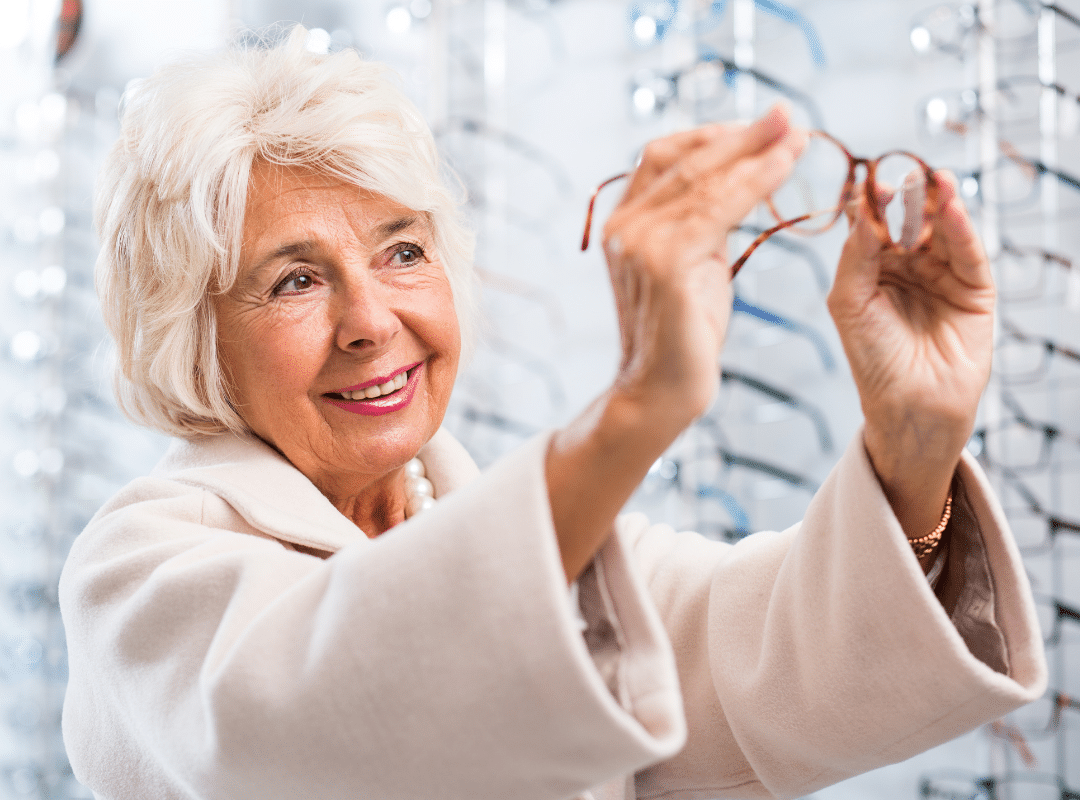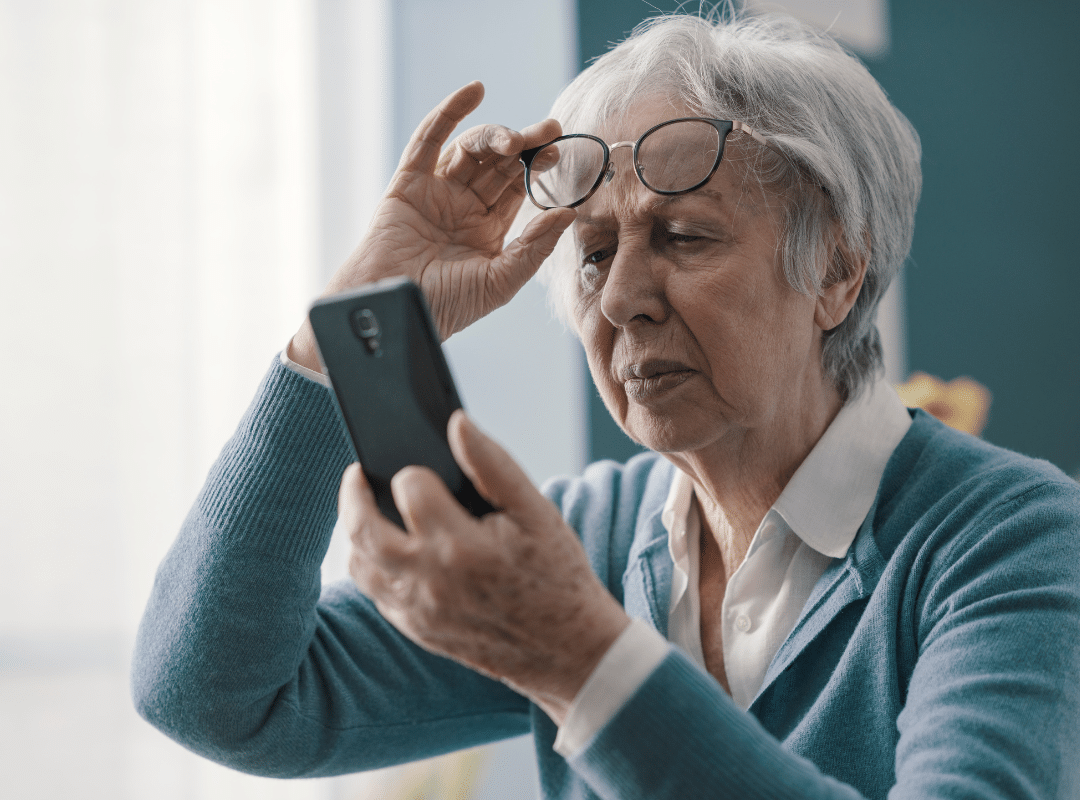As we age, our vision becomes more vulnerable to a variety of conditions that can compromise our independence and well-being. Addressing eye problems in seniors requires not only awareness but also proactive care and lifestyle adjustments. At Magnolia Terrace Assisted Living, prevention, early detection, and healthy habits can make a meaningful difference in maintaining eye health well into our golden years.
In this article, we’ll explore the signs of aging eyes, highlight the most common eye disease in older adults, and share effective strategies on how to reverse aging eyesight. Whether you’re a senior or a loved one supporting them, understanding and acting on these insights can safeguard the gift of sight.
Understanding Age-Related Eye Conditions
As you grow older, understanding how your eyes change is essential. The most common eye disease in older adults includes cataracts, glaucoma, and age-related macular degeneration (AMD). These conditions can significantly affect daily life:
- Cataracts cause cloudy or blurred vision and can make colors look faded.
- Glaucoma silently damages the optic nerve, often with no early warning signs.
- AMD deteriorates central vision, affecting reading and facial recognition.
Other conditions, like diabetic retinopathy and dry eye syndrome, also contribute to eye problems in seniors. Recognizing symptoms early—such as glare sensitivity, reduced night vision, or eye fatigue—is essential in preventing further damage. Learn more about eye-nourishing foods by visiting this nutrients for eye health guide on our blog.
The Role of Regular Eye Exams
One of the most important steps in preventing or managing eye problems in seniors is scheduling regular eye exams. Early detection can halt or delay the progression of serious eye diseases.
Why Regular Check-Ups Matter:
- Detects early signs of AMD, cataracts, or glaucoma.
- Monitors changes that could signal sudden blurred vision in elderly individuals.
- Helps track vision prescriptions to prevent accidents and falls.
- May reveal other health issues such as diabetes or hypertension.
Make routine exams a part of your daily care routine to ensure holistic wellness.
Lifestyle Habits That Support Eye Health
Certain lifestyle habits can help slow the progression of age-related vision loss and even help how to reverse aging eyesight naturally.
Healthy Lifestyle Tips:
- Stay hydrated: Dry eyes worsen without adequate fluid intake.
- Get enough sleep: Proper rest allows your eyes to repair overnight.
- Eat for your eyes: Focus on greens, omega-3s, and colorful vegetables.
- Move your body: Regular exercise supports circulation and eye pressure regulation.
- Limit screens: Reduce digital strain by following the 20-20-20 rule (every 20 minutes, look 20 feet away for 20 seconds).
By combining these with physical activities like senior physical therapy, you’ll improve not just your vision but your overall vitality.
Recognizing Eye Emergencies
Sudden Vision Changes
Sudden blurred vision in elderly adults should never be ignored. It may be a sign of stroke, retinal detachment, or acute glaucoma. If you notice:
- Vision loss in one eye
- Flashing lights
- Dark spots or floaters
- Eye pain and nausea
Seek medical care immediately. Acting quickly can prevent permanent vision damage. Learning the difference between assisted living and skilled nursing is also helpful when managing emergency care for seniors.
Persistent Eye Discomfort
If you’re consistently dealing with red, itchy, or dry eyes, don’t brush it off. Chronic dryness can signal dry eye syndrome, which is common among seniors. Persistent issues should be addressed with an eye care specialist. Environmental triggers, medications, and extended screen exposure can all be culprits. Be sure also to evaluate how other symptoms, such as shortness of breath, might be impacting overall health.
Key Signs of Aging Eyes
How do you know your eyes are aging? Watch for these signs of aging eyes:
- Difficulty adjusting to light changes
- Needing brighter lighting for reading
- Colors appearing faded
- Struggling to see at night
- Increased sensitivity to glare
While these symptoms may seem minor at first, they could be early indicators of cataracts or AMD. Addressing them promptly is key to managing eye problems in seniors before they escalate.

How to Reverse Aging Eyesight Naturally
Although aging affects all parts of the body—including the eyes—some natural remedies may slow or even slightly improve eye performance:
- Eye exercises: Palming, focusing drills, and eye yoga improve muscle flexibility.
- Blue-light protection: Wear protective glasses when using digital devices.
- Reduce sugar intake: High blood sugar levels are linked to vision loss.
- Get outside: Natural light supports circadian rhythm and eye health.
- Use supplements: Vision-supporting nutrients like lutein, zeaxanthin, and zinc are critical.
These steps contribute to the broader approach of how to reverse aging eyesight, though medical advice should always guide any major changes.
Preventing Long-Term Vision Loss
Here are specific habits that help reduce the risk of eye problems in seniors:
- Wear sunglasses with UV protection.
- Quit smoking, which accelerates optic nerve damage.
- Monitor blood pressure and blood sugar.
- Avoid rubbing your eyes to prevent corneal damage.
- Wash your hands before touching your face to prevent infections.
When combined with professional support and personalized care, these steps can delay the progression of the most common eye disease in older adults.
Nutrition for Strong Eyes
Your plate plays a powerful role in eye protection. Below are the top nutrients that help:
Leafy Greens
- Rich in lutein and zeaxanthin
- Help filter high-energy blue light
- Boost macular pigment density
Omega-3 Fatty Acids
- Found in salmon, flaxseed, and walnuts
- Reduce inflammation and support retinal health
- Helpful in dry eye prevention
Essential Vitamins
- Vitamin A: Promotes night vision
- Vitamin C: Strengthens blood vessels
- Vitamin E: Protects from free radical damage
Visit this guide for more insights on senior wellness and nutrition.
Eye Comfort and Daily Care
Keeping your eyes comfortable every day doesn’t require complicated routines. Here’s a table of easy actions you can take:
| Practice | Benefit |
| Screen Breaks | Reduces digital eye strain |
| Hydration | Prevents dryness and irritation |
| Lubricating Drops | Soothes itchy, burning eyes |
| Ambient Lighting | Reduces glare and eye fatigue |
| Eye Exercises | Improves flexibility and blood flow |
Together, these contribute to delaying the effects of aging on your eyesight.
Additional Resources
Want to explore more about aging eyes and senior care? These trusted resources provide additional reading:
- National Eye Institute – Aging and Your Eyes
- American Academy of Ophthalmology – Vision Changes in Aging Adults
A Clearer Future Starts Now
Taking charge of your vision doesn’t require drastic changes—just consistent habits, the proper knowledge, and professional support. By understanding the signs of aging eyes, recognizing symptoms like sudden blurred vision in elderly individuals, and addressing the most common eye disease in older adults, you can proactively protect one of your most vital senses.
At Magnolia Terrace Assisted Living, we are committed to supporting residents through regular vision care, nutritional support, and comprehensive wellness services. Visit our website to learn more or schedule a personal tour today.
Ready to take the next step toward better vision? Contact us at 419-462-3900 or click here to reach out. Let’s keep your future in focus.
Frequently Asked Questions
What is the most common eye problem in the elderly?
The most common eye problem in the elderly is cataracts, a condition where the lens of the eye becomes cloudy, leading to blurry vision. Cataracts typically develop slowly over time and may cause difficulty reading, driving at night, or recognizing faces. They are highly treatable through surgery, which replaces the cloudy lens with a clear artificial one. Early detection through regular eye exams helps seniors manage symptoms before vision loss becomes severe.
What are the different types of eye problems?
There are many types of eye problems, ranging from mild to severe conditions. Common ones include cataracts, glaucoma, macular degeneration, diabetic retinopathy, and dry eyes. Each condition affects vision differently, such as causing blurred sight, loss of central vision, or increased eye pressure. Because symptoms can overlap, routine eye exams are essential for proper diagnosis and timely treatment.
Can castor oil cause eye problems?
Castor oil is sometimes used in eye drops or remedies for dry eyes, but misusing it can cause irritation or discomfort. Pure, sterile formulations may be safe in moderation, but applying unrefined castor oil directly to the eyes can increase the risk of infection. Some people may also experience redness, itching, or blurry vision as side effects. It’s best to consult an eye doctor before using castor oil for any eye condition.
What are the four most common eye problems?
The four most common eye problems affecting seniors are cataracts, glaucoma, age-related macular degeneration, and diabetic retinopathy. Cataracts cause cloudy vision, while glaucoma damages the optic nerve due to high eye pressure. Macular degeneration affects central vision, making tasks like reading or recognizing faces difficult. Diabetic retinopathy occurs in people with diabetes and can lead to severe vision loss if untreated.

